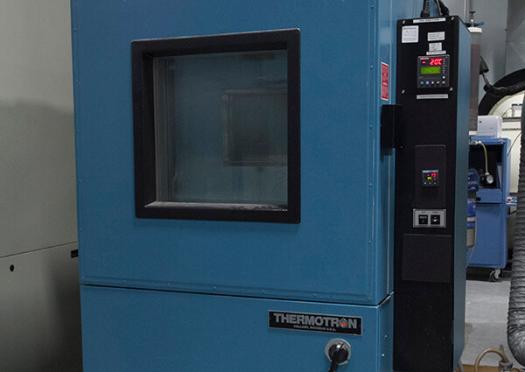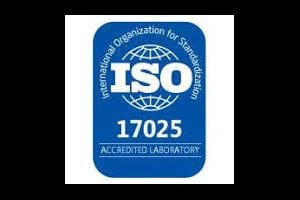연락처
텍트로닉스 담당자와 실시간 상담 6:00am-4:30pm PST에 이용 가능
전화 문의
9:00am-6:00PM KST에 이용 가능
다운로드
매뉴얼, 데이터 시트, 소프트웨어 등을 다운로드할 수 있습니다.
피드백
Temperature and Humidity Testing
Strengthening products by simulating the natural environment.
Tektronix is a prominent provider of comprehensive environmental testing services, excelling in the simulation of various natural conditions such as temperature, humidity, and vibration to guarantee optimal product performance in their intended environments. Customers choose Tek for many reasons, including:
-
Trusted Expertise: Tektronix is a leading provider of environmental testing services, specializing in simulating natural conditions like temperature, humidity, and vibration.
-
Proven History: With a robust track record — starting in 1956 — Tektronix is known for its precise and responsive testing methods.
-
Competitive Advantage: Our testing ensures product durability in real-world conditions, minimizing post-redesign uncertainties after previous test failures.
-
Benefits: Partner with Tektronix to enhance product resilience, streamline design, and guarantee reliable performance for your business needs.
Types of Environmental Testing
- Acceleration Hi / Lo G-levels
- HALT / HASS
- Temperature / Humidity
- Thermal Shock
- Dust / Water Ingress
- Shipment / Package Evaluation
- Hose Down / Leak
- Solar Simulation
- Wind / Rain
- Icing / Freezing Rain
- Temperature Cycle
- Salt Spray / Corrosive Environment / S02
- ESS
- Storage
- Shelf Life
- Rub Testing
- HAST
- Corona Discharge / DWV
- Life Cycle
- Qualification Programs
- Enclosure Evaluation
- Immersion
- Endurance
- Explosive Atmosphere
- Fungus

Typical Environmental Testing Standards
- ANSI
- ASTM
- IEC
- JEDEC
- MIL-STD-202
- MIL-STD-810
- MIL-STD-750
- MIL-STD-883
- MIL-STD-167
- MIL-STD-331
- MIL-S-901
- NEMA
- RTCA/DO-160
- Telcordia
- Many more!
Featured Content
Accredited Testing Lab Locations

Tektronix testing services labs are ISTA certified to perform a variety of tests.

Tektronix is certified by A2LA as an ISO/IEC 17025 Accredited laboratory. View Certificate...
What is Environmental Testing?
Environmental testing, often referred to as environmental simulation testing, is a crucial process aimed at preparing products for the challenges of real-world usage. By simulating various testing conditions and collecting performance data early in a product's lifecycle, manufacturers can ensure their products' durability and reliability. This type of testing involves creating artificial environments to evaluate how items withstand the stresses they are likely to encounter in their expected operational settings.
An Example of Environmental Testing: Rocket and Missile Valves
In the aerospace and defense industry, ensuring the reliability of critical components is essential. Environmental testing for rocket and missile valves involves a battery of assessments, including:
-
Vibration Testing: Simulating launch vibrations to evaluate structural integrity.
-
Temperature Extremes: Assessing valve performance under extreme temperature variations.
-
High G-forces: Ensuring valves function reliably during rapid acceleration.
-
Pressure Testing: Validating sealing integrity under high pressures during propulsion.
-
Altitude Testing: Testing functionality in high-altitude environments with temperature variations.
-
Salt Fog Testing: Evaluating resistance to corrosion, vital for naval missile applications.
-
Shock Testing: Measuring valve resilience to sudden impacts and jolts.
These comprehensive environmental tests are crucial to guarantee the reliability and safety of rocket and missile valves in the challenging conditions of space and flight, contributing to mission success and preventing potential system failures.
Challenges and Importance
While the concept of environmental testing seems straightforward, it addresses significant challenges in product design and development. Engineers often need to predict how products will perform in real-world conditions before they are put into service, posing a dilemma between time-to-market pressures and comprehensive testing. Releasing inadequately tested products risks reputation damage, costly recalls, and litigation. To address this, robust environmental testing strategies are essential to ensure products are both reliable and market-ready.
Purpose of Environmental Testing
The purpose of environmental simulation testing is multi-faceted:
-
Regulatory Compliance: Many industries, including aerospace and defense, require compliance with specific standards for product testing.
-
Competitive Edge: Adhering to standards and rigorous testing can differentiate products from competitors, particularly in consumer electronics.
-
Risk Mitigation: Thorough testing helps reduce the likelihood of product failures, lawsuits, and negative impacts on reputation.
-
Enhanced Reliability: Simulated testing improves product reliability and quality, resulting in reduced warranty claims and maintenance costs.
-
Design Validation: Testing exposes design flaws early, allowing for improvements that result in better end products.
Benefits of Environmental Testing
Environmental testing's benefits encompass improved product reliability, reduced risk, and long-term financial gains. By comparing the costs of testing to potential expenses related to defects, recalls, and warranty claims, companies can establish the financial viability of implementing a testing program. Furthermore, investing in testing enhances customer satisfaction, reduces negative impacts on reputation, and increases sales potential.
Conducting Environmental Testing
Environmental testing involves a variety of approaches:
-
Dynamics Testing: Simulates conditions like acceleration, vibration, fatigue, and shock/drop to test a product's physical endurance.
-
EMC/EMI Testing: Ensures electronic devices are resistant to electromagnetic disturbances and adhere to relevant operational standards.
-
Materials and Chemical Testing: Examines material properties and reactions to environmental factors such as temperature fluctuations and UV exposure.
-
Other Types of Testing: Testing may include changes in heat, pressure, humidity, moisture, UV exposure, and weathering.



